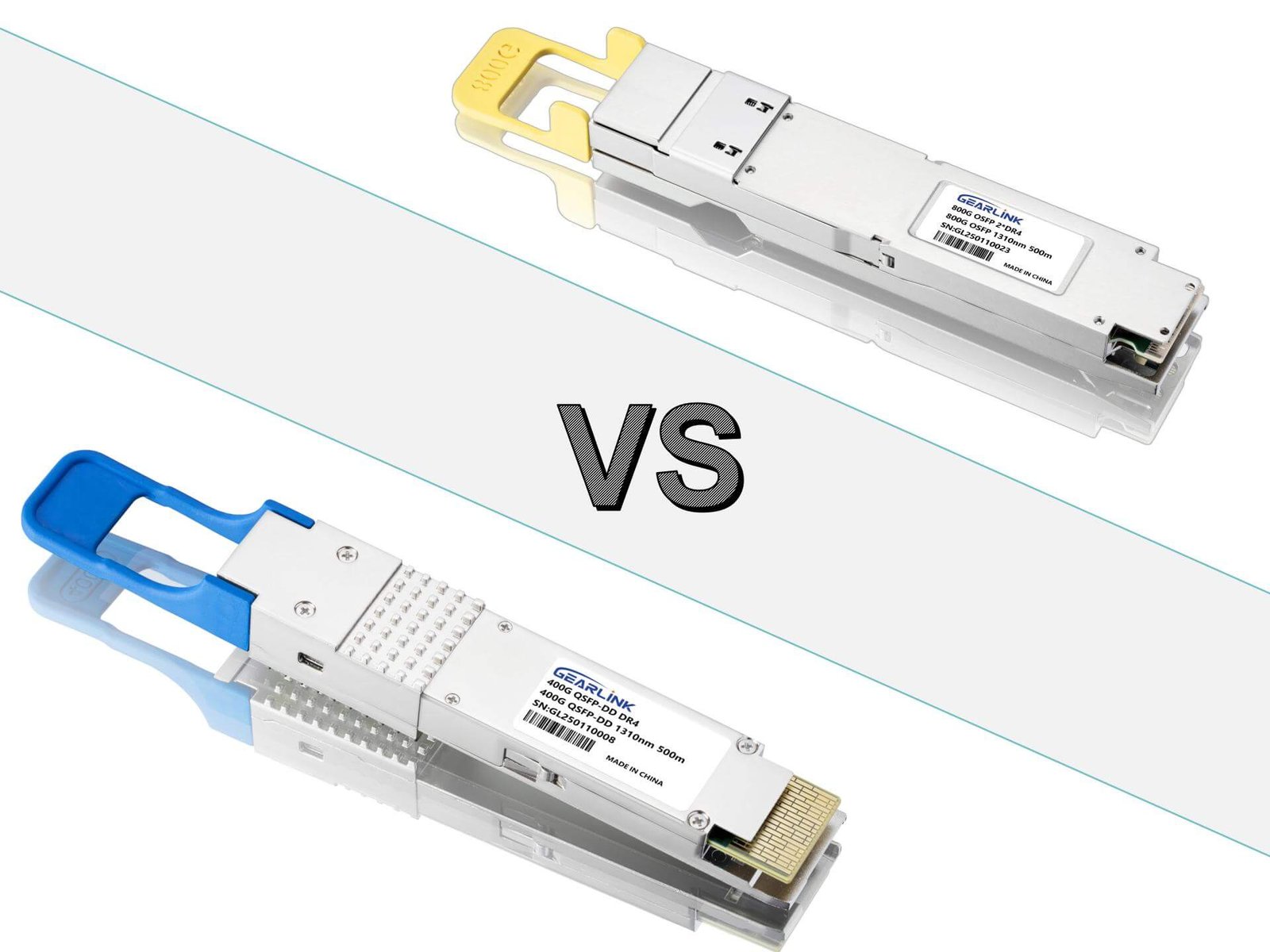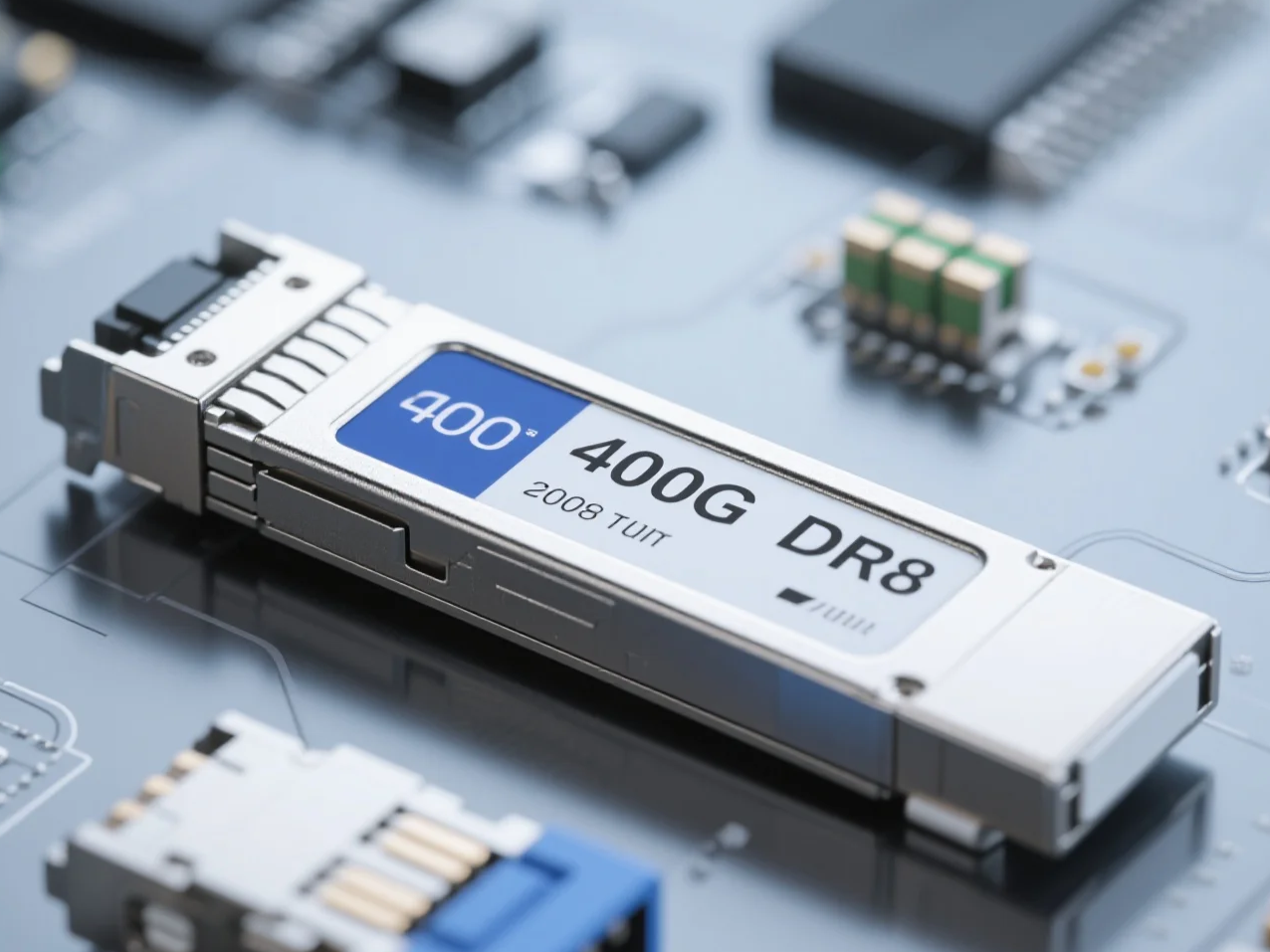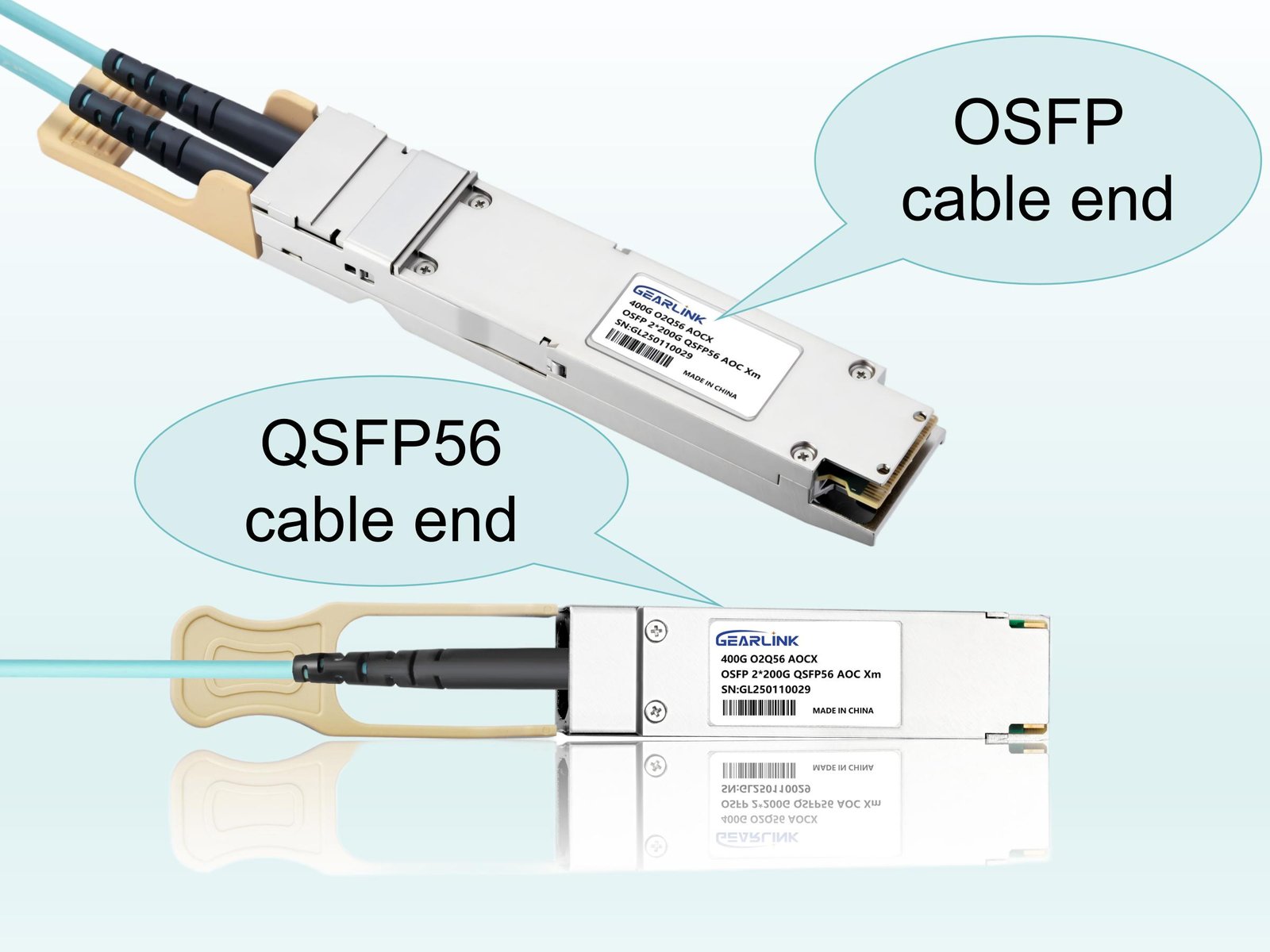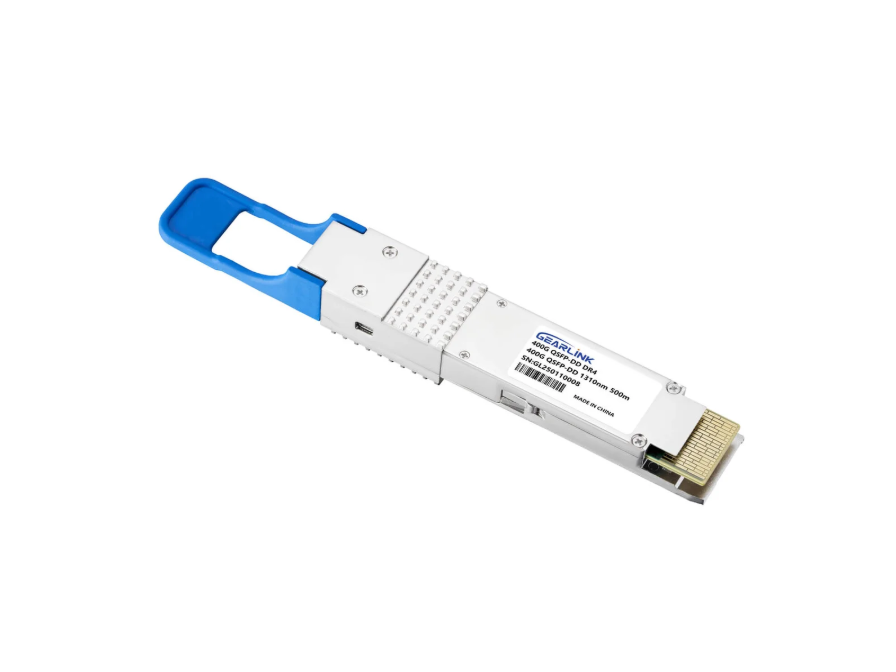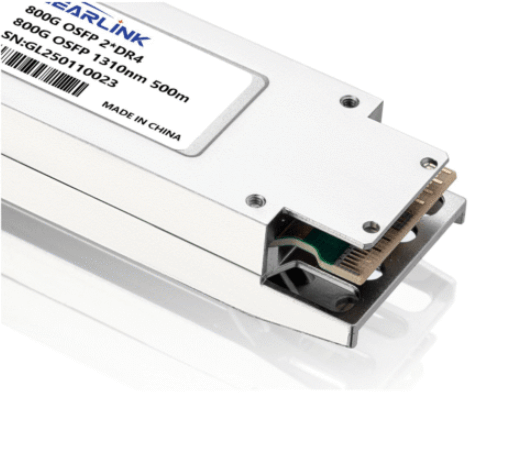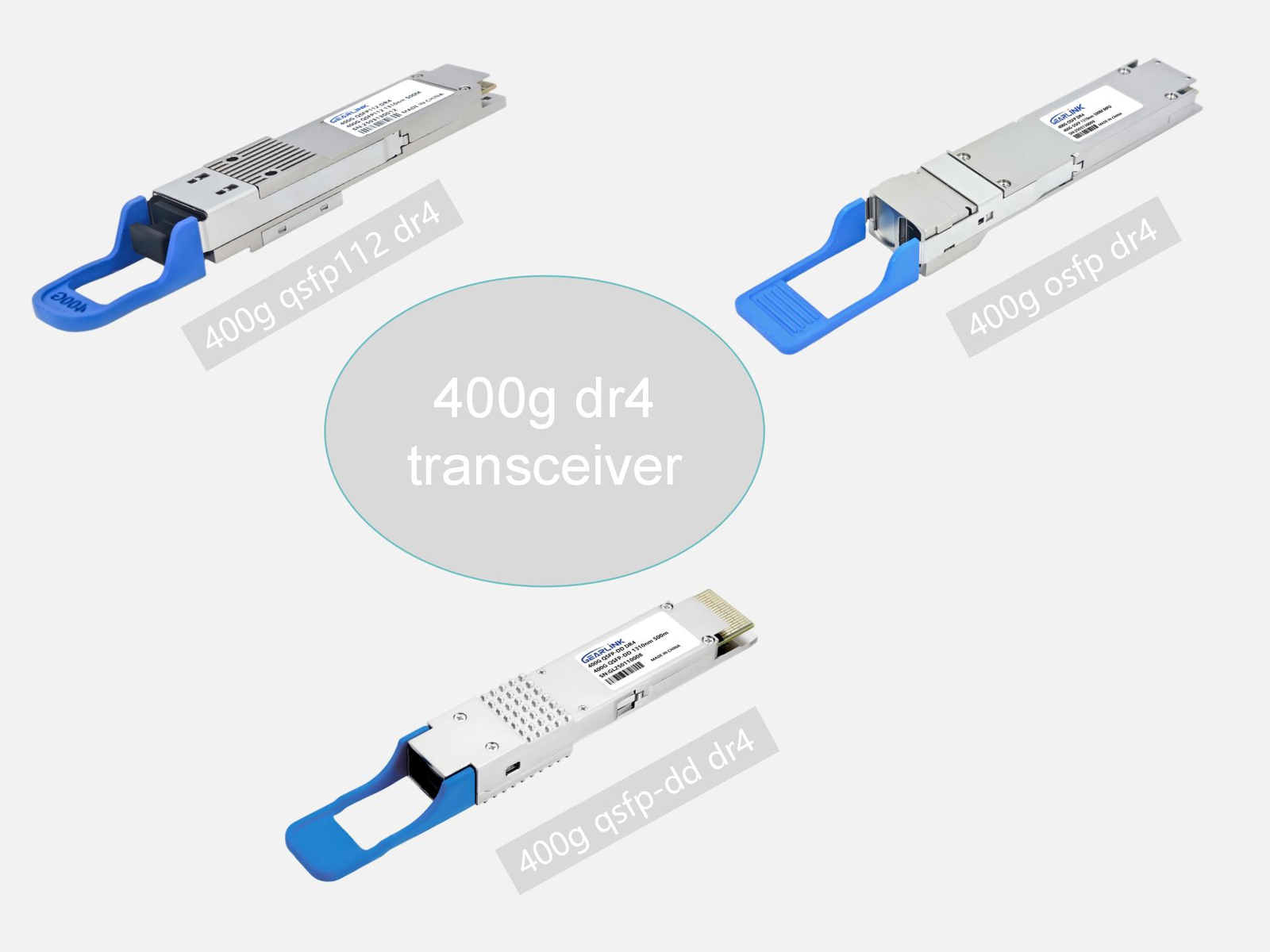Driven by AI, large-scale model training, and high-performance computing (HPC), modern data centers have demanded far greater bandwidth. As a result, 800G OSFP DR8 transceiver and 800G QSFP-DD DR8 transceiver have emerged as two of the most important standards for next-generation optical interconnects.
This article provides a detailed comparison between the 800G OSFP DR8 transceiver and the 800G QSFP-DD DR8 transceiver, analyzing their technical distinctions, application scenarios, and selection guidelines, in order to assist enterprises and data center operators in making well-informed decisions.
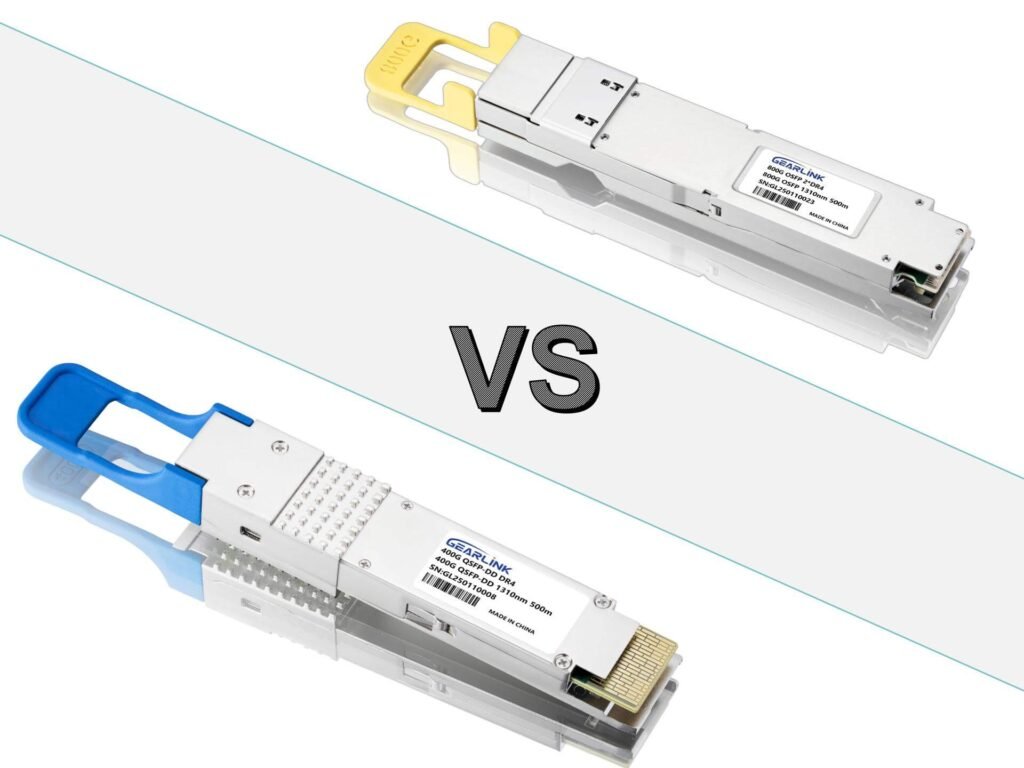
What Is an 800G Optical Transceiver?
An 800G transceiver is an optical module capable of supporting an 800Gbps transmission rate per device, designed as the successor to 400G optical modules. Key technical features include:
High-speed transmission: Each module achieves 800Gbps, meeting the bandwidth demands of AI clusters, large-scale data centers, and HPC environments.
Low power consumption: Typical power consumption is kept below 20W, enabling dense rack deployments.
High port density: Both 800G OSFP DR8 transceivers and 800G QSFP-DD DR8 transceivers support large-scale port deployment.
Reliable performance: PAM4 modulation and low-latency architecture ensure bit-error rates of ≤1e-12.
800G OSFP DR8 Transceiver Overview
The 800G OSFP DR8 transceiver (Octal Small Form Factor Pluggable) is designed for high-performance 800G networks. Its characteristics include:
Physical dimensions: 21.5mm × 89.0mm × 13.5mm, providing more space for heat dissipation.
Optical channel design: 8×100G PAM4 lanes supporting 800Gbps.
Power consumption: 16–18W, suitable for dense rack deployments.
Application scenarios: HPC, AI training clusters, and data center core interconnects.
800G QSFP-DD DR8 Transceiver Overview
The 800G QSFP-DD DR8 transceiver (Quad Small Form Factor Pluggable Double Density) represents an upgrade of the QSFP-DD family, balancing density and compatibility:
Physical dimensions: 18.35mm × 89.0mm × 13.5mm, more compact and enabling greater port density.
Optical channel design: 8×100G PAM4 lanes for 800Gbps data transmission.
Power consumption: 16–18W, comparable to OSFP DR8.
Application scenarios: Enterprise data centers, cloud networking, and smooth QSFP-DD system upgrades.
Main Differences Between 800G OSFP DR8 Transceivers and 800G QSFP-DD DR8 Transceivers
Form Factor and Port Density
800G OSFP DR8 transceiver: Slightly larger size, superior thermal performance, but lower port density.
800G QSFP-DD DR8 transceiver: More compact, higher port density, though with greater thermal challenges.
Electrical Interface Design
800G OSFP DR8 transceiver: Supports 12V power supply, higher interface bandwidth, and stronger future upgrade potential.
800G QSFP-DD DR8 transceiver: Uses traditional QSFP-DD interface, backward compatible with 400G QSFP-DD modules.
System Compatibility
800G OSFP DR8 transceiver: Requires equipment with native OSFP slots, offering advantages in new data centers.
800G QSFP-DD DR8 transceiver: Fully compatible with the existing QSFP-DD ecosystem, allowing cost-efficient upgrades.
Thermal Design and Power Management
800G OSFP DR8 transceiver: Larger dissipation area, excellent performance under high-power conditions.
800G QSFP-DD DR8 transceiver: Compact design, requiring optimized airflow and heat management.
Application Scenarios of 800G OSFP DR8 Transceivers and 800G QSFP-DD DR8 Transceivers
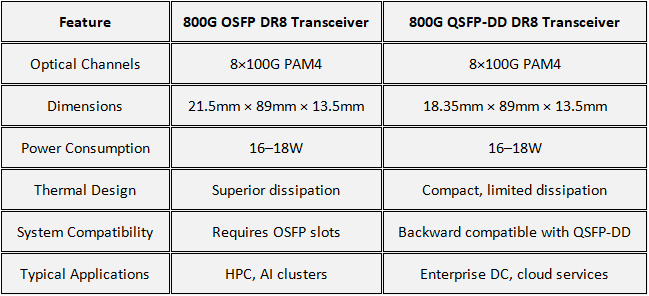
AI Training Cluster Interconnection
The 800G OSFP DR8 transceiver provides clear advantages in AI training clusters, enabling high-bandwidth, low-latency interconnects.
Data Center Core Switch Upgrades
The 800G QSFP-DD DR8 transceiver ensures smooth upgrades in existing data centers with QSFP-DD equipment, offering strong backward compatibility.
Cloud and Metro Interconnection
The 800G QSFP-DD DR8 transceiver also supports 500m to 2km DR transmission, ideal for cloud and metro data center interconnects.
Selection Guidelines: Choosing Between 800G OSFP DR8 Transceivers and 800G QSFP-DD DR8 Transceivers
When selecting an 800G transceiver, enterprises should evaluate:
Device compatibility: OSFP vs QSFP-DD slots in existing hardware.
Port density requirements: Rack space and scaling limitations.
Thermal and power constraints: High-power environments favor OSFP.
Upgrade potential: The 800G OSFP DR8 transceiver offers more scalability.
Cost and ecosystem maturity: The 800G QSFP-DD DR8 transceiver delivers lower deployment costs and a broader ecosystem.
Conclusion
Both the 800G OSFP DR8 transceiver and the 800G QSFP-DD DR8 transceiver share similar technical specifications but are optimized for different use cases:
The 800G OSFP DR8 transceiver is ideal for high-performance, high-power environments such as supercomputing centers, AI clusters, and newly built data centers.
The 800G QSFP-DD DR8 transceiver is better suited for cost-effective deployments, backward-compatible upgrades, and cloud interconnects.
Regardless of which is chosen, the ultimate goal is to achieve reliable, high-bandwidth, and low-latency connectivity, ensuring data centers are prepared for future networking demands.
If there are any questions or clarifications required, readers are welcome to contact us for further discussion.
